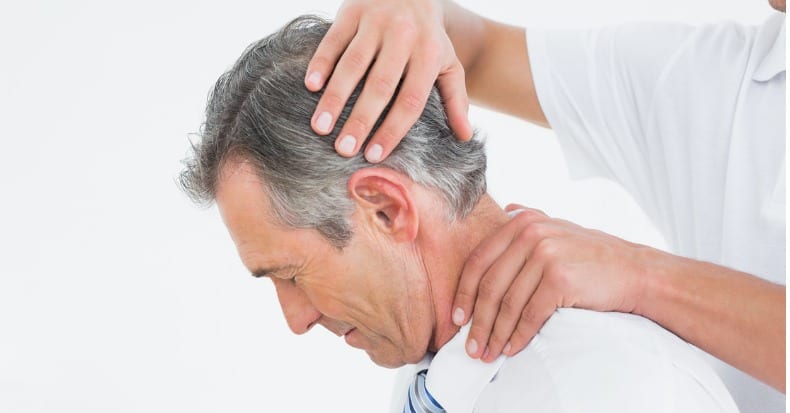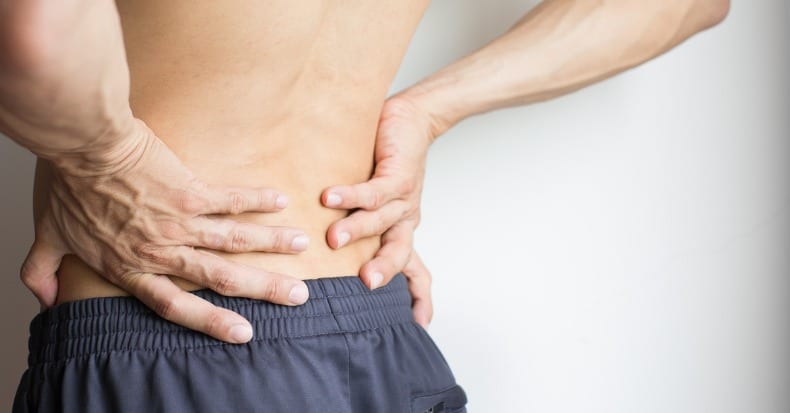Newest Articles
Mechanical neck pain—neck pain without neurological compromise, often without a specific cause—is associated with a loss of mobility, poor activity tolerance, increased pressure pain sensitivity (or hypersensitivity to a normal stimulus), and increased joint position sense error (JPSE—difficulty reproducing the same movement when repeated multiple times). Patients with mechanical neck pain often seek treatment from [..]
Every career has its pros and cons when it comes to physical exertion, stress, work hours, the physical environment (temperature, cleanliness, etc.), and more. But when a worker develops carpal tunnel syndrome (CTS), is it the job that’s the culprit or is there something else responsible for the patient’s symptoms?
Since we spend about a [..]
Knee pain is a common complaint that will affect about 30% of the general population at some point in adulthood. Since running has a reputation for causing knee pain due to “wear and tear”, the question frequently arises as to whether or not running accelerates knee problems. So, what does the current body of research [..]
Did you know that an alarming 90% of neurologically injured whiplash patients DO NOT recover and have neck muscle dysfunction even up to a year after the date of their motor vehicle collision?
There is suspicion among researchers that such ongoing issues are the result of the body’s initial response to injury to the brachial [..]
Omega-3 polyunsaturated fatty acid (omega-3-PUFA) consumption has been linked to reduced inflammation, a lower risk for heart attack and stroke, and even improved outcomes for patients with carpal tunnel syndrome. Here’s a benefit that may come as a surprise: ANXIETY relief!
Anxiety is the most commonly experienced psychiatric symptom, and it’s reported that it will [..]
The chiropractic spinal adjustment (specific joint manipulation) is the passive assistance of moving a specific joint through a complete range of motion while causing no injury to the joint tissues. This adjustment is known for the cavitation process. Cavitation is the audible, palpable “popping” sensation experienced by both the patient and the chiropractor when the [..]
Non-specific low back pain (nsLBP) is one of the most common and costly healthcare problems affecting society, and it is also the leading cause of activity limitation and work absence around the world.
Following a course of treatment to reduce pain and improve function for patients with a musculoskeletal complaint—such as back pain—doctors of chiropractic [..]
Headaches have a significant impact on quality of life in both adults and children. Approximately 13% of patients who sought chiropractic care over the last decade did so for headache relief. Several studies have found that manual therapies, such as spinal manipulation and mobilization, can provide significant benefits for patients with both tension-type and migraine [..]
Because inflammation along the course of the median nerve can contribute to carpal tunnel syndrome (CTS), consuming these inflammation-reducing foods may help the patient achieve their desired outcome.
Salmon and other fatty fish, including tuna and sardines, are rich in omega-3 fats called EPA and DHA, which help reduce inflammation. Supplements are commonly used as [..]
When people think of hip pain, they generally turn to hip-specific exercises as a self–help strategy. However, recent evidence shows there’s a correlation between poor core stability of the trunk and injury to the lower extremities, which includes the hips. In March 2018, Belgian researchers reviewed data from nine previously published studies with a focus [..]
Though whiplash injuries can arise from any sudden jar, like a slip and fall or sports injury, they are most commonly associated with motor vehicle collisions (MVCs), even those that occur at low speeds. To best understand how someone can become injured in cases where little to no vehicular damage has occurred, we need to [..]
If someone said that suboptimal breathing patterns and problems associated with posture and trunk stability are related, what would you say? Sounds pretty far-fetched, doesn’t it?
There are many factors that can result in both faulty respiration and poor posture including poor exercise tolerance (being “out of shape”), dyspnea (shortness of breath), poor chest expansion, [..]















